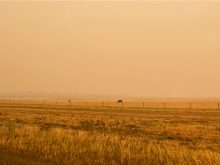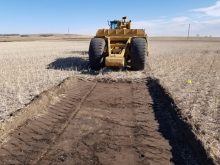This is a continuation of last week’s column about how we can feed a world with nine billion people in fifty years.
As I noted last week, 30 per cent of the world’s food production is wasted. Resolving this would go a long way toward feeding the expected increase in population over the next 50 years, but is that a realistic target?
I can see developing nations making greater headway in reducing waste loss in their systems a lot sooner than I can see the developed nations reducing our food waste issues.
Read Also

Claas brings 1000 Series SP forage harvesters to Canada
In mid-August, Claas unveiled its new line of Jaguar forage harvesters at an event in Visalia, California, deep in the heart of that state’s dairy region.
We in the developed world are not aware and or don’t care about food waste. The cost of food and access to it is not a real concern to most of us.
Those in developing countries are keenly more aware of the fact that food is scarce and precious to life and will no doubt make efforts to reduce loss due to waste. The food they save could mean life or death to them.
The reality of the situation is that we may be able to reduce the total waste down to 20 or maybe even 15 per cent worldwide but I don’t think it will ever get any better than that.
- More with Brian Wittal on Grainews: Feeding the world’s masses
Foreign interests in land
The majority of the population growth over the next 50 years is going to happen in the African, Indian and Eurasian regions of the world. These regions have available arable lands for increasing grain production, but over the past several years foreign interests have been leasing or purchasing farmlands — displacing local farmers.
On February 19, a Reuters article began with this: “Mozambique, a country wracked by hunger, has signed away land concessions three times larger than Greater London to outside investors in the past decade, displacing thousands of farmers in the process, said a report released on Thursday.”
The article goes on to say that, since 2006, Mozambique has signed long term leases on more than 535,000* acres, in deals that are often joint ventures involving politically-connected Mozambican officials. These leased acres will mainly be used to grow soybeans and corn for export to Asia and Europe. Meanwhile, the article says, the United Nation’s World Food Program reports that more than 42 per cent of Mozambican children are malnourished.
If the population of Africa is going to increase exponentially over the next 50 years why would they give away or lease out farm lands and displace their farming population?
It looks like greed and corruption at the highest levels of government to me.
If these lands produce grains for export, investors can make a dollar selling grains elsewhere — the majority of Mozambique’s population can’t afford to pay market value for grain to feed themselves. “Too bad, so sad,” I guess.
This is the dark side of the capitalist free market. Where is humanity, compassion and common sense? You can be sure little to no grain or monies from these lands will stay in Mozambique to help the populous.
Effect on your prices
What else do we need to do to feed nine billion people in the next 50 years?
Continued advancements in grain genetics would be one more way to move us towards that goal. Progress in yield gains, nutritional benefits or disease control would certainly help the cause.
One problem is the ongoing battle with opponents of GMOs that have many running scared because of the fear factor they try to use on the uninformed consumer, primarily in first world countries where it is easy to find the monies to wage these battles regardless the validity of the facts they present.
The only real way that I can see that we will be able to feed 9 Billion people in 50 years is with a massive humanitarian food aid program, because so many of the worlds population cannot afford to buy or access the food they will need to feed themselves and stay alive.
I fear that 50 years will not be enough time to ensure that we can feed the growing population of this world.
What could this mean with respect to grain markets and pricing? Sorry, but I have more questions than answers.
The majority of the population increase over the next half century will be in the third world. The majority of these people will not be able to afford to buy food. Can we expect this new demand due to growth to impact grain prices if they can never afford to buy the grain?
There are too many other variables such as weather, war and economic factors that will have more impact on prices than a growing population.
Prices cycle. They will not stay high nor will they stay low. The best thing to do is prepare yourself and become a skilled marketer so that you can take advantage of the good times and survive the bad to live and farm another day.
*Editor’s note: This article originally ran with an incorrect number, 535 hectares, here. We apologize for this error — it was not the fault of the author.
















